Tips for a tough season: supplementation – northern Australia
This is the fourth part in our series on planning for tough seasons.
Pasture management in dry seasons often goes hand-in-hand with supplementation.
Northern beef industry specialist Geoff Niethe, who helps coordinate MLA’s grassfed cattle research program, said the key considerations when introducing supplementation during a tough season are minimising stock losses and ensuring the wellbeing of animals while trying to maintain herd performance when the season breaks.
Several factors will guide the development of a cost effective and sustainable supplementation program:
- An estimate of how long the feeding program will be required in relation to the likely ‘break’ in season or ‘green date’ for your region.
- A stocktake on feed reserves (pastures, top feed, conserved fodder), the classes of stock to retain and access to funds.
- Determine what is deficient (energy, protein, dry matter or a combination) to guide supplementation selection.
- Economic considerations, including the value for money for feed options.
“If there is adequate dry standing feeding available, then a protein supplement is nearly always the first option to consider,” Geoff said.
“A feed budgeting tool such as Stocktake Plus can be used to estimate quantity of feed, while a faecal NRIS test will provide information about the nutritional value of pasture.”
In a situation where pastures are scarce and suitable agistment cannot be found, whole cotton seed, grain, hay or molasses come into the equation to provide an alternative energy source.
Consider the class of livestock when honing in on specific feeding requirements. For example, lactating cows and young animals often need a source of true protein, such as lupins or copra meal. However, early weaning is still the best supplement for a lactating cow as it is more cost effective to feed a weaned cow and a young calf than a cow-calf unit.
Supplement selection
Price is often a deciding factor in product selection, so calculate the cost per unit of energy/protein.
This table from MLA’s Water Medication booklet (published in 2005) demonstrates how the cost of urea can vary depending on the form of supplement. (Note: Producers need to obtain current prices for the various protein supplements from their local retailers.)

Freight cost is a major consideration when feeding energy supplements, so price your feed on the cost of a megajoule of energy (cents/kg DM) based on the price landed at the property. Try to purchase hay on price/tonne and not price/bale if possible to better assess its value.
Given the high cost of freight associated with feeding energy supplements, if a lengthy feeding regime is expected then some herd reduction should be considered.
However, price is not the only consideration. The advantages and disadvantages of all products will be influenced by availability, aversion to risk, control of waters, ease of distribution, time required to prepare and distribute supplement, the infrastructure and mixing equipment you need/have, and convenience.
Animal wellbeing
Supplementation should start before animals become poor in condition. Stock in poor condition can be more susceptible to bogging, bullying, toxicities and disease. If possible, draft off the most vulnerable and weakest stock and feed separately to enhance their chances of survival.
Feeding grain can cause acidosis and a high energy diet can lead to ruminitis.
Grain overload can be avoided by slow introduction, ensuring adequate access of all stock to the grain, frequent feeding of small amounts and provision of alternative products, such as hay (bearing in mind this could carry higher freight costs than grain).
Urea poisoning is a risk that needs to be managed, so urea should be introduced slowly (especially loose licks). Avoid intermittent supply, beware of soft and crumbling blocks, avoid pooling of water in the supplements especially after rain and monitor water medication systems.
Other strategies to consider:
- Provide adequate trough space or trail feed grain/cotton seed to reduce bullying behaviour so all animals can access feed.
- Urea supplementation can increase animal feed intakes by up to 30% so adjust stocking rates accordingly.
- Feed hay and grain in the same area, to minimise weeds, and feed out away from inlets to dams, to minimise silting.
- When it rains, allow pastures time to re-establish before grazing. Consider individual land condition and the resilience of your country before ceasing supplementation.
Tools
- Stocktake Plus: This smartphone app version of the Stocktake program was developed for the northern beef industry, to guide decision making. Functions include monitoring grazing land and conducting forage budgets.
- Planning and managing a supplementary feeding program: This FutureBeef resource includes strategies to planning and managing a supplementary feeding program.
- Making More From Sheep: This program includes a feed cost calculator to compare the value of feeds on an energy and crude protein basis.
- More Beef From Pastures: This program includes drought preparedness tools to determine probable costs of feeding different livestock classes.
- Beef cattle nutrition: a guide to the essentials: This booklet guides producers through assessing the nutrient value of their pastures and calculating the cost of nutritional inputs required to meet their production targets.
More information
Geoff Niethe E: g.niethe@bigpond.com
Read the other articles in this series on planning for tough seasons:
- Water management – northern and southern
- Pasture management – northern and southern
- Animal welfare



